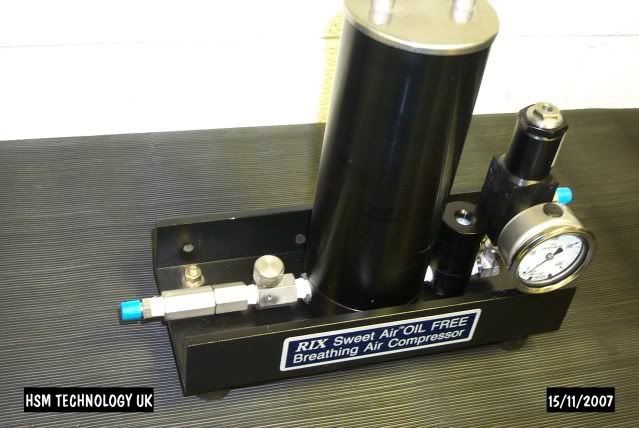Hi All,
I might one day go to the filter re-packing route if I use a second tower.
I been reading this compressor section from post of day 1 ( dated some years ago ) to current and goes thru information on MS 13X.
Interesting what Pescador wrote :
As I reported on Scubaboard, tests of 13X show it will go dead in 24 hours when exposed to atmosphere.
I also read Bauer website, their dictionary that stated :
The molecular sieve must be store in an absolutely dry place immediately. Otherwise, the substance will absorb moisture from the surrounding air, reducing the absorption capacity. Storing molecular sieve in plastic bags is ineffective; plastics are water-permeable. Even aluminium-coated plastic envelopes are not entirely airtight. Therefore, drying cartridges should not be stored for more than six months.
Then I was looking at plastic permeability :
http://http://www.packaging-gateway.com/features/feature50/
I think Bauer is not all that bull$hit and I realized the reason behind aluminum foil wrapping on Bauer filter cartridges and two years shelf life reccomended.
Now the question is short of re-generating new/fresh MS 13X by heating as also indicated by Pescador ( to remove moisture but not to remove pollutant ), how do I as a consumer know that I am getting a fresh/dry MS 13X ? Its not only about cost but its about starting with a known fresh 13X and the repeatibility of calculating filter life based on ambient temperature, when I re-pack myself.
I can get a 2 gram resolution digital weighing machine to weight the MS 13X,
but how do I measure the density of something like MS which is round and can't be "compacted" like water to have a reference weight against stacked volume in a measuring container ....?...unless I measure before I oven dry the MS 13X and weight it again after that.
Any tips Gentlemen ?
Thanks
Iya
I might one day go to the filter re-packing route if I use a second tower.
I been reading this compressor section from post of day 1 ( dated some years ago ) to current and goes thru information on MS 13X.
Interesting what Pescador wrote :
As I reported on Scubaboard, tests of 13X show it will go dead in 24 hours when exposed to atmosphere.
I also read Bauer website, their dictionary that stated :
The molecular sieve must be store in an absolutely dry place immediately. Otherwise, the substance will absorb moisture from the surrounding air, reducing the absorption capacity. Storing molecular sieve in plastic bags is ineffective; plastics are water-permeable. Even aluminium-coated plastic envelopes are not entirely airtight. Therefore, drying cartridges should not be stored for more than six months.
Then I was looking at plastic permeability :
http://http://www.packaging-gateway.com/features/feature50/
I think Bauer is not all that bull$hit and I realized the reason behind aluminum foil wrapping on Bauer filter cartridges and two years shelf life reccomended.
Now the question is short of re-generating new/fresh MS 13X by heating as also indicated by Pescador ( to remove moisture but not to remove pollutant ), how do I as a consumer know that I am getting a fresh/dry MS 13X ? Its not only about cost but its about starting with a known fresh 13X and the repeatibility of calculating filter life based on ambient temperature, when I re-pack myself.
I can get a 2 gram resolution digital weighing machine to weight the MS 13X,
but how do I measure the density of something like MS which is round and can't be "compacted" like water to have a reference weight against stacked volume in a measuring container ....?...unless I measure before I oven dry the MS 13X and weight it again after that.
Any tips Gentlemen ?
Thanks
Iya







